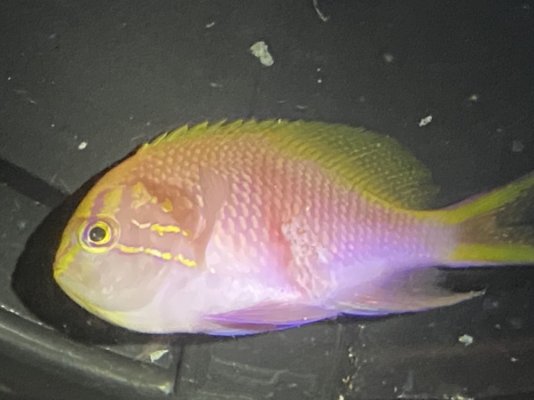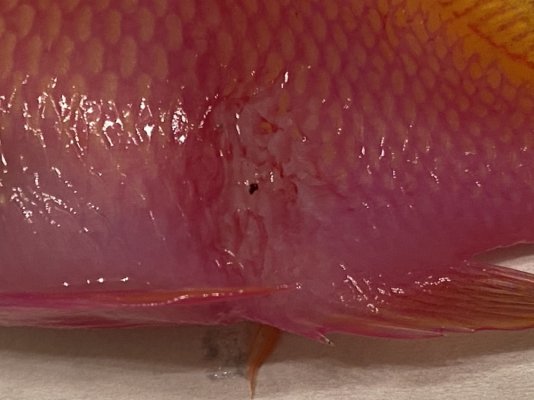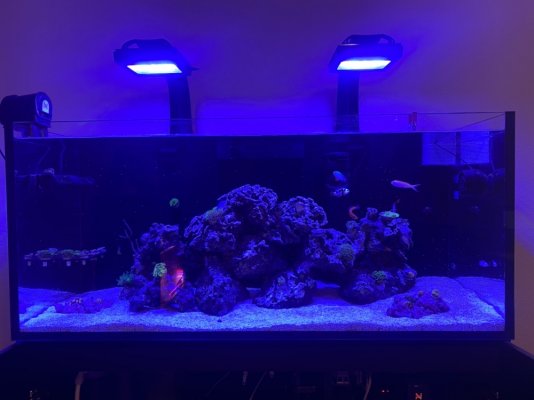Unfortunatley I must reactivate this thread...
Seems like that Dispar Anthias from Live Aquaria was infected with a disease and now its in my tank, several fish have died since then with the same symptoms.
Mostly Anthias. 2 Evansi, 2 Fathead Sunburst and now my resplendent has begun to show the same signs and isnt swimming, should last only a couple of days max.
I tried to save them with NeoPlex but by the time I saw symptoms it was too late.
So, I gotta fix this permanently immediately, before all my fish die.
I would like to receive advice on how to proceed. From what I read it seems like Uronema and I understand I might have to start over again.
I have:
Reefer 350 with 90 gallons
Sand
Live Rock
Corals
20 gallon quarantine tank
UV filter
GFO/Carbon reactor
Protein Skimmer
Refugium with Chaeto
Apex
Trident
DOS
Radions G5
I attached images of the last fathead that died.
Thank you very much.
Seems like that Dispar Anthias from Live Aquaria was infected with a disease and now its in my tank, several fish have died since then with the same symptoms.
Mostly Anthias. 2 Evansi, 2 Fathead Sunburst and now my resplendent has begun to show the same signs and isnt swimming, should last only a couple of days max.
I tried to save them with NeoPlex but by the time I saw symptoms it was too late.
So, I gotta fix this permanently immediately, before all my fish die.
I would like to receive advice on how to proceed. From what I read it seems like Uronema and I understand I might have to start over again.
I have:
Reefer 350 with 90 gallons
Sand
Live Rock
Corals
20 gallon quarantine tank
UV filter
GFO/Carbon reactor
Protein Skimmer
Refugium with Chaeto
Apex
Trident
DOS
Radions G5
I attached images of the last fathead that died.
Thank you very much.




















